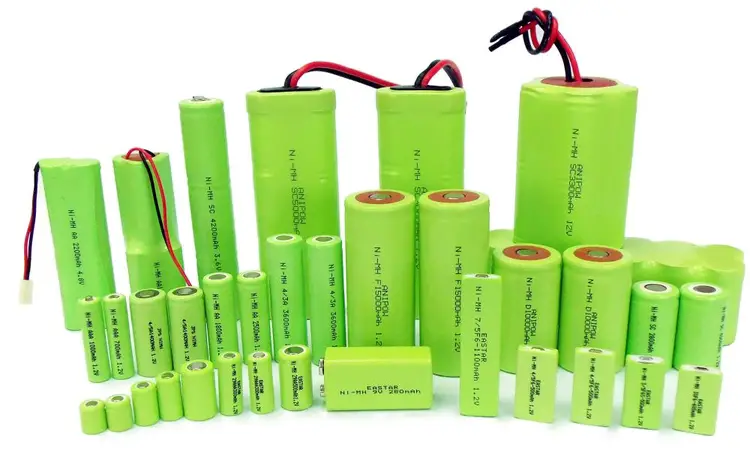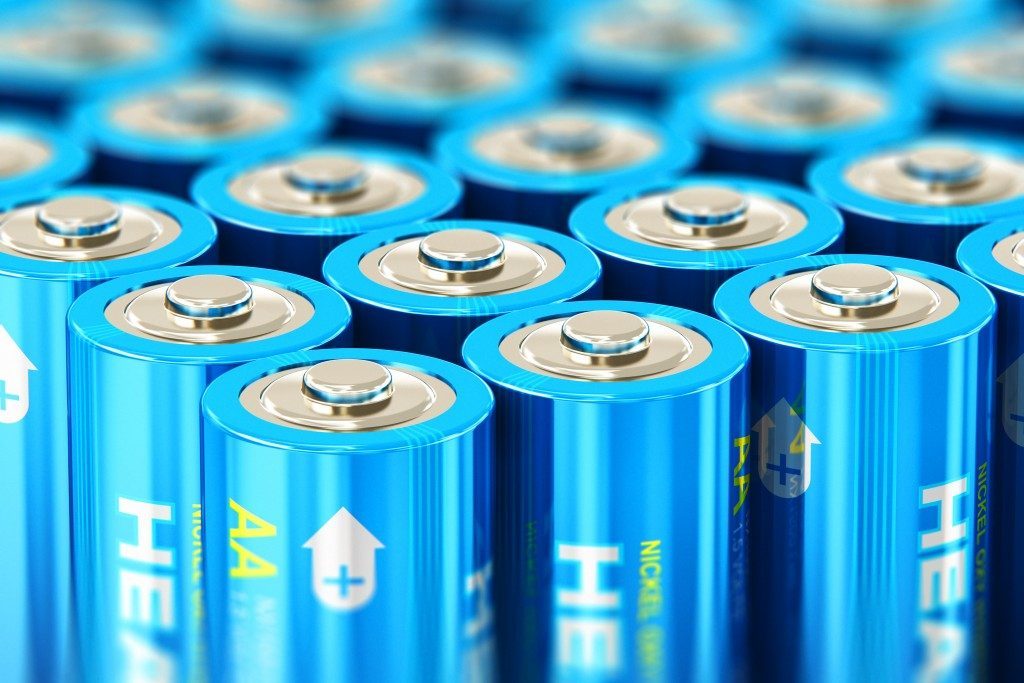-
29 W. Pawnee, Bloomfield, NJ 07003
How Long Do Rechargeable AA Batteries Last?
Rechargeable AA batteries represent a significant investment for consumers seeking sustainable power solutions. Understanding their lifespan—both in cycle count and calendar years—is essential for making informed purchasing decisions. This comprehensive guide examines all factors affecting rechargeable AA battery longevity, from chemistry types to usage patterns, providing evidence-based insights to maximize your battery investment.
Types of Rechargeable AA Batteries
Before diving into lifespan specifics, let’s understand the main types of rechargeable AA batteries available in 2025.
Nickel-Metal Hydride (NiMH) Batteries
NiMH batteries remain the most common rechargeable AA option on today’s market. These batteries typically offer capacities between 2000-2800mAh and have become significantly more reliable since their introduction. Modern NiMH batteries, particularly those with “low self-discharge” technology, hold their charge much longer when not in use compared to earlier generations.

Premium NiMH batteries like Eneloop can be recharged 1,800-2,100 times according to manufacturer specifications, with fifth-generation models released in 2022 offering capacity between 2,000-2,100mAh for AA size. These batteries retain approximately 70% of their charge even after 5 years of storage, making them excellent for emergency devices or occasional use applications.
Nickel-Cadmium (NiCd) Batteries

Though less common in 2025 due to environmental concerns and the “memory effect” issue, NiCd batteries still exist in the market. They typically offer lower capacity (600-1000mAh) than NiMH alternatives but handle extreme temperatures better. The primary drawback is their environmental impact, as cadmium is a toxic heavy metal that requires special disposal procedures.
Lithium-ion (Li-ion) Batteries

While less common in standard AA form, Li-ion rechargeable batteries represent the premium segment of the market. They offer excellent energy density, minimal self-discharge, and no memory effect. Quality Li-ion AA batteries can typically handle around 1,000 charge cycles before significant capacity loss. Their calendar life is also impressive, though their higher cost often limits widespread adoption in household applications.
Battery Type Comparison Table
| Battery Type | Typical Capacity (mAh) | Average Charge Cycles | Self-Discharge Rate | Best Applications |
|---|---|---|---|---|
| NiMH | 2000-2800 | 500-2100 | 20-30% per year (standard)5-10% per year (low self-discharge) | Digital cameras, gaming controllers, flashlights |
| NiCd | 600-1000 | 500-1000 | 10-20% per month | Power tools, emergency lighting, medical devices |
| Li-ion | 1500-3400 | 500-1000 | 2-3% per month | High-drain devices, precision instruments |
Lifespan in Charge Cycles
The primary measure of rechargeable battery life is the number of charge cycles it can endure before significant capacity loss occurs.
What Is a Charge Cycle?
A charge cycle refers to one complete discharge and recharge of a battery. In real-world use, this doesn’t necessarily mean depleting the battery completely before recharging. For example, discharging a battery to 50% twice counts as roughly one full cycle.
Battery manufacturers typically define the end of useful life as when a battery retains only 80% of its original capacity. This threshold represents the point where most users notice decreased performance, though the batteries remain functional beyond this point.
Average Cycle Counts by Battery Type
Modern NiMH AA batteries show impressive cycle longevity. Standard NiMH batteries typically handle 500-1000 cycles, while premium low self-discharge variants like the Eneloop 5th generation can achieve up to 2,100 cycles under optimal conditions.
The Eneloop comparison table from Wikipedia illustrates this evolution clearly:
| Variant | Model Number | Release Date | Capacity (mAh) | Max. Cycles (DOD 60%) | Charge Retention After 5 Years |
|---|---|---|---|---|---|
| Original Eneloop | HR-3UTG | November 2005 | 2,000 | 1,000 | Unknown |
| 5th Generation | BK-3MCD | June 2022 | Up to 2,100 | 2,100 | 70% |
NiCd batteries typically deliver 500-1000 cycles, while Li-ion AA batteries offer approximately 500-1000 cycles before significant degradation.
Calendar Lifespan of Rechargeable Batteries
Beyond cycle count, the calendar lifespan – how many years the batteries remain useful – matters greatly for many users.
Expected Years of Service
With proper care, quality rechargeable AA batteries can remain useful for:
- Premium NiMH batteries: 5-10 years
- Standard NiMH batteries: 3-5 years
- NiCd batteries: 2-3 years (due to higher self-discharge)
- Li-ion batteries: 3-7 years (calendar aging occurs regardless of use)
These estimates assume average household use patterns. Heavy users operating high-drain devices might reach their cycle limit before calendar aging becomes significant.
Self-Discharge Rates
All rechargeable batteries lose charge over time even when not in use, known as self-discharge. This factor significantly impacts calendar lifespan:
- Standard NiMH: 20-30% capacity loss in first month, then 10-15% monthly
- Low self-discharge NiMH (like Eneloop): 5-10% first year, 3-5% annually thereafter
- NiCd: 10-20% monthly
- Li-ion: 2-3% monthly in proper storage conditions
Modern low self-discharge NiMH batteries represent a massive improvement over earlier generations. For instance, the 5th generation Eneloop batteries retain approximately 70% of their charge even after 5 years in storage.
Factors Affecting Battery Lifespan
Several factors significantly impact how long your rechargeable AA batteries will last:
Depth of Discharge
Consistently discharging batteries completely before recharging (deep discharge) accelerates capacity loss. Partial discharges are generally better for long-term battery health, particularly for Li-ion batteries. However, NiMH batteries occasionally benefit from a full discharge to prevent voltage depression (sometimes incorrectly called “memory effect”).
Operating Temperature
Temperature dramatically affects both immediate performance and long-term lifespan. Most rechargeable batteries perform optimally between 68-77°F (20-25°C). High temperatures (above 86°F/30°C) accelerate chemical degradation inside batteries, permanently reducing capacity.
Extreme cold reduces immediate capacity but doesn’t typically cause permanent damage unless the batteries are charged while very cold, which can lead to lithium plating in Li-ion batteries.
Charging Practices
Using improper chargers or charging techniques significantly shortens battery life. Fast charging at high currents generates heat and stress that degrades internal components. Quality smart chargers that adjust charging rates and stop automatically when batteries are full help maximize lifespan.
Storage Conditions
Long-term storage conditions greatly impact calendar lifespan. For optimal longevity:
- Store at moderate temperatures (59-77°F/15-25°C)
- Maintain partial charge (40-60% for Li-ion, 40-80% for NiMH)
- Keep in a dry environment with moderate humidity
- Avoid exposure to direct sunlight or heat sources
Quality and Manufacturing
Not all rechargeable batteries are created equal. Premium brands invest in higher-quality materials, more precise manufacturing, and better quality control. While these batteries cost more initially, they typically deliver many more cycles and better long-term value.
How to Maximize Rechargeable Battery Life
Follow these best practices to extend your rechargeable AA battery lifespan:
Use Quality Smart Chargers
Invest in a good-quality smart charger that:
- Detects individual battery status
- Prevents overcharging
- Applies optimal charging current
- Includes temperature monitoring
- Offers conditioning/refresh modes for maintenance
Basic chargers without these features can overcharge batteries, causing heat damage and shortened lifespan.
Avoid Extreme Temperatures
Heat is particularly damaging to all battery types. Never leave batteries in hot vehicles, direct sunlight, or near heat sources. Similarly, avoid charging batteries when they’re very cold – let them warm to room temperature first.
Match Batteries to Applications
Use appropriate battery types for different devices:
- High-drain devices (digital cameras, flashes): High-capacity NiMH or Li-ion
- Medium-drain devices (toys, controllers): Standard NiMH
- Low-drain devices (remote controls, clocks): Low self-discharge NiMH
Using batteries unsuited to the application can cause unnecessary wear.
Proper Storage Techniques
For batteries used infrequently:
- Store at room temperature or slightly cooler
- Keep at partial charge (not full, not empty)
- Check and refresh charge every 6-12 months
- Store in a dedicated battery case to prevent contact with metal objects
Regular Maintenance
Periodically condition NiMH batteries by running them through a complete discharge/recharge cycle in a smart charger with a conditioning feature. This helps maintain capacity and can restore performance in batteries showing early signs of voltage depression.
Signs Your Rechargeable Batteries Need Replacement
Even with proper care, rechargeable batteries eventually reach end-of-life. Watch for these indicators:
Significantly Reduced Runtime
The most obvious sign is dramatically shorter run times in devices. When batteries deliver less than 60-70% of their original capacity, most users find the performance unacceptable for demanding applications.
Physical Changes
Inspect batteries regularly for:
- Bulging or deformation
- Leakage or corrosion at terminals
- Damaged or peeling labels/exterior
- Discoloration
Any physical damage indicates the battery should be safely recycled immediately.
Charging Issues
Batteries nearing end-of-life often exhibit charging problems:
- Excessive heating during charging
- Failure to reach full charge
- Rapid self-discharge after charging
- Charger indicating battery errors
Inconsistent Performance
Aging batteries typically show inconsistent behavior:
- Voltage dropping suddenly rather than gradually
- Different performance in identical devices
- Intermittent device shutdowns
Environmental Impact and Recycling
Rechargeable batteries offer significant environmental advantages over disposables, but proper disposal remains critical.
Environmental Benefits
A single rechargeable AA battery can replace hundreds or even thousands of disposable batteries over its lifespan. This significantly reduces waste and resource consumption. Research indicates that a rechargeable battery needs to be used approximately 50 times to offset its manufacturing environmental impact compared to disposables.
Proper Disposal and Recycling
All rechargeable batteries should be recycled rather than discarded in regular trash. They contain materials that can be harmful to the environment, including nickel, cadmium (in NiCd batteries), and lithium (in Li-ion batteries).
Many retailers, municipal waste facilities, and dedicated recycling centers accept rechargeable batteries for proper processing. Visit Earth911 to find recycling options near you.
FAQs About Rechargeable AA Batteries
Do rechargeable batteries work in all devices?
Most rechargeable AA batteries work in devices designed for standard alkaline AA batteries. However, there are a few exceptions:
- Some high-precision devices require very stable voltage
- Certain medical devices may specify alkaline only
- Extremely low-drain devices like wall clocks may drain rechargeables faster due to slightly lower nominal voltage
Always check your device manual for battery compatibility.
How often should I charge my rechargeable batteries?
For optimal lifespan, charge NiMH batteries when they reach approximately 20% remaining capacity rather than waiting until they’re completely depleted. Complete depletion can stress the cells and potentially damage them. Li-ion batteries prefer partial discharge cycles rather than deep discharges.
Can I mix different brands or ages of rechargeable batteries?
I recommend using matched sets of the same brand, age, and capacity whenever possible. Mixing batteries with different characteristics can lead to:
- Uneven discharging (weaker batteries drain faster)
- Potential reverse charging of depleted cells
- Reduced overall performance
- Shorter lifespan for all batteries in the set
Do rechargeable batteries lose capacity when stored?
Yes, all rechargeable batteries experience self-discharge during storage. The rate varies significantly by type:
- Standard NiMH: 20-30% in first month
- Low self-discharge NiMH: 1-3% per month
- NiCd: 10-20% per month
- Li-ion: 2-3% per month
For long-term storage, low self-discharge NiMH batteries offer the best performance, with premium models retaining up to 70% charge after 5 years.
Conclusion: Maximizing Your Rechargeable Battery Investment
Rechargeable AA batteries offer both economic and environmental advantages over disposable alternatives. With proper selection and maintenance, quality rechargeable batteries typically deliver 500-2,100 charge cycles and 3-10 years of service life.
For most applications in 2025, low self-discharge NiMH batteries present the optimal balance of performance, longevity, and value. Their excellent capacity retention during storage makes them suitable for both frequent and occasional use scenarios.
Key takeaways for maximizing rechargeable battery lifespan:
- Use appropriate battery chemistry for your specific applications
- Invest in quality smart chargers with individual cell monitoring
- Maintain proper storage conditions between uses
- Follow manufacturer-recommended charging practices
- Recycle batteries responsibly at end-of-life
While rechargeable batteries require higher upfront investment than disposables, they typically recover their cost within 50 use cycles while significantly reducing environmental impact. By implementing the best practices outlined in this guide, you’ll ensure reliable power and maximum value from your rechargeable batteries for years to come.
This guide is regularly updated with the latest research and technological developments in rechargeable battery technology.

